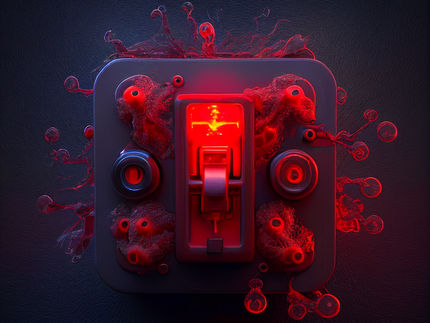When the Body Fights Itself
Autoimmunity and Infections
Advertisement
Basel-based doctors are on the trail of a possible connection between autoimmune diseases and infections: errors can occur when immune cells absorb certain proteins from pathogen cells.
It is already known that there is a connection between infections and autoimmunity – the inability of an organism to recognize parts of its own body as “self”. As a result, increasing hygiene is leading to a higher incidence of autoimmune diseases in the population. It is also apparent that some autoimmune diseases are triggered by infections. However, the mechanism behind these connections is still not fully understood. One possible explanation is that the immune system confuses protein structures from pathogens with the body’s own proteins because they look structurally alike.
Errors in protein uptake
Together with colleagues from the Whitehead Institute in Cambridge (USA), the Basel-based team of researchers tested out a new hypothesis in experiments to investigate the special ability of immune cells to identify specific proteins on the surface of neighboring cells and capture them from the cell membrane. In certain cases, errors can occur in the uptake of these proteins, as the group led by Professor Tobias Derfuss has now demonstrated.
Their assumption is that certain immune cells, so-called B cells, capture not only the protein of an influenza virus for which they were specialized but also small quantities of other neighboring membrane proteins. One example of this is a protein known as an autoantigen that originates from the cell membrane layer in the central nervous system. An immune response to this membrane protein results in an autoimmune inflammation in the brain in the animal model and may well also contribute to inflammation of this kind in humans.
Harmful immune cells
B cells cultivated with cells that had incorporated both the influenza virus protein and the membrane protein were not only able to activate other immune cells, specifically certain T cells, in order to combat the virus; they also activated T cells that had recognized the body’s own membrane protein – which can trigger autoimmune inflammation in the brain. Consequently, a viral infection could lead to the activation of autoaggressive T cells through an error in the protein uptake of B cells.
The researchers discovered this mechanism after conducting experiments using cells from genetically modified mice. “The next step would now be to examine whether similar errors occur in protein uptake by human B cells. We also want to clarify whether a viral infection in an animal can, under certain circumstances, lead to autoimmune inflammation in the brain,” says Derfuss. Corresponding follow-up projects are planned.


















































